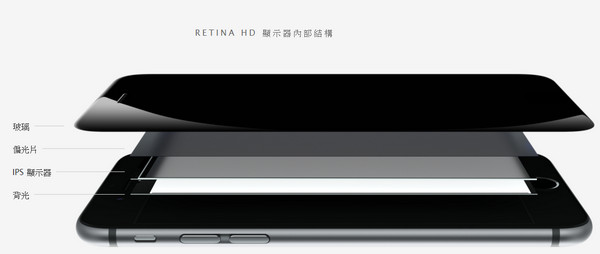Apple’s iPhone 6 is finally here. The company’s CEO Tim Cook unveiled the phones at Apple’s Special Event which took place during the twilight hours in Taiwan on Sept. 10, 2014 (Taipei time). Some of the rumors about the iPhone 6 specs proved true, such as the phones coming in two different sizes. The smaller 4.7-inch phone has been coined iPhone 6 by the Cupertino company, while the larger 5.5-inch has been named the iPhone 6 Plus.
 |
|
Apple beat previous industry estimations that the iPhone 6 Plus will not be showcased at the Special Event on Sept. 9, 2014. Turns out both models will be sold this year. (All photos courtesy of Apple) |
In LEDinside’s special feature report last week, it was noted market rumors suggested the 5.5-inch iPhone 6 might come with sapphire substrate cover glass. This rumor was proved wrong at the special event. It turns out sapphire cover glass will not be featured in either iPhone 6 models.
 |
|
The new iPhone 6 is a super thin 6.9mm compared to competing same sized phones. |
The iPhone 6 comprises of glass, stainless steel and anodized aluminum. Both phone models come equipped with Retina HD displays. Resolution in the smaller iPhone 6 is 326 ppi (1,334 x 750 pixels), which was slightly lower than LEDinside analysts’ previous estimations of 385 ppi. However, LEDinside analysts estimations that the iPhone 6 Plus resolution would be around 400 ppi (1,920 x 1,080 pixels) was nearly spot on to the released product’s 401 ppi. Apple’s new phones are respectively 6.9 mm and 7.1 mm thick, making it the largest and thinnest phone on the market.
Sapphire glass will still be found on both iPhone 6 models home button and camera lenses, which meets LEDinside’s previous projections. The two phone models continue to implement iPhone 5s Touch ID technology, where the sapphire glass is cut with lasers and installed on the surface of the home button. When the user touches the home button on the iPhone 6, the surrounding stainless steel ring detects the finger, which then triggers the capacitive touch sensors to respond. The laser-cut sapphire crystal button than directs the finger image to the sensor, which reads the outer skin and fingerprint. Once the system recognizes the user identity, the phone is unlocked. Additionally, as previously noted the sapphire glass will also be employed in the two iPhone models iSight cameras. The camera cover lenses will also be using sapphire glass.
 |
|
The camera in the new iPhone 6 is a single round camera module that uses dual flash LED, pretty much in-line with market rumors. |
As noted in a LEDinside report in August 2014, the new iPhone 6 will use dual flash LED. The system known as True Tone Flash LED uses a white LED with an amber LED to improve flash LED lighting. The LED modules used have proven to be round and simply designed.
There has been several upgrades in the iPhone 6 and iPhone 6 Plus hardware that Apple did not go into detail at the special event. The iPhone 6 has added a barometer to sense air pressure and Near Field Communication (NFC) for Apple Pay, the company’s mobile wallet payment system. All which are new innovations in the smartphone.
 |
|
The price range for the new iPhone 6 under two year U.S. mobile contracts. |
Sales of iPhone 6 and iPhone 6 Plus are expected to take place on Sept. 26, 2014 in Taiwan, but telecommunication companies have not released the retail price yet. Worth noting is the two models have abandoned the 32GB storage option, and now offer 16GB, 64GB and 128GB storages. The iPhone 6 price in the U.S. under a two year mobile phone contract will be US $199, while the iPhone 6 Plus starting price will be from US $ 299 . Prices in U.S. are much lower than China Mobile’s pricing of RMB 5,288 (US $860.16) for the iPhone 6 and RMB 6,288 for iPhone 6 Plus.
 |
|
The price range for the new iPhone 6 Plus under two year U.S. mobile contracts. |
(Author: Angela Yang, Reporting Editor, LEDinsidehttp://Editor: Judy Lin, Chief Editor, LEDinside)
For further reading:
What to Expect on the iPhone 6 (Previous estimations of iPhone 6 specs)
















